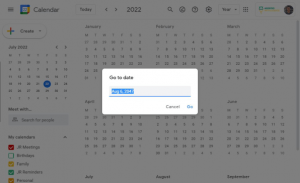Being a blogger can be really frustrating some times, especially when you’re trying to boost your search engine rankings.
Despite following all the expert SEO advice you still find your blog ranked below your competitors, even though your content is better and offers more value.
Before you start banging your head against the wall, let me solve this for you.
There’s high probability that your blog has a weak “technical SEO” structure.
But don’t worry, it’s not as complex as it sounds.
A strong technical SEO structure ensures that search engine spiders can easily crawl your site and index your content. It’s different from on-page and off-page SEO.
Even if you don’t want to go too deep into technical SEO, you can boost your site’s search engine rankings by making just three basic changes.
Note: I’m assuming that you already have strong on-page and off-page SEO. If not, then technical SEO alone won’t be able to help you rank higher.

1. Increase Your Website’s TTFB
One of Google’s primary objectives is to provide a seamless, accurate and valuable search experience to its users.
Slow websites and blogs are a big hurdle in that objective. Slow loading speed kills user experience and wastes valuable time.
That’s why Google has now made Page Speed a key element in search rankings. You just cannot afford to have a slow website anymore.
According to a Moz, Google doesn’t take into account the complete page load speed while ranking sites. Instead, it focuses on TTBF (Time To First Byte)
TTBF is the amount of time it takes to download the first byte of your webpage. The quicker it is, the better.
So how exactly do you speed up your website?
Well, first of all you need to see where you stand by using Google’s Page Speed tool.

This tool will give you an out of 100 score based on the speed of your website. Anything above 80 is good. But you can improve your speed further by following the recommendations of this tool.
Apart from the website specific recommendations that you’ll get from Google’s Page Speed tool, follow these steps to make sure your blog loads quickly.
– Get rid of any unnecessary and inactive plugins and scripts on your blog. Identify the most useful and necessary plugins and get rid of the rest.
– Use a modern content delivery network (CDN) for your static files and dynamic HTML scripts. Many bloggers use CDNs for their static and HTML files.
But here’s the problem
Most HTML files are marked as dynamic because of which traditional CDNs don’t really know how to deal with them. Because of this, website speeds remain slow despite using a CDN.
So make sure your CDN is actually optimizing the dynamic HTML files as well.
– Use a well-known, fast and dependable web hosting service. If your web hosting server is slow, your website will always take more time to load no matter what you do. So it’s important to get this step right.
Also make sure that the server uptime for your hosting service is above 95% over 1 month. You can monitor server uptime by using Pingdom. It will send you alerts every time your server goes down.
– Use the WP-Smush plugin to automatically optimize the size of all the images you upload. Also make sure that most of your images are in GIF and JPEG format. These are easier to optimize as compared to PNG and BMP.
2. Use a Mobile Friendly Website Design
One of the major changes to technical SEO this year has been Google’s increased focus on mobile friendly websites. Google rolled out its mobile friendly update this year which ranks sites with a mobile friendly design, higher in search results.
As a blogger, you need to make sure that your website either uses responsive web design or has a separate mobile version.

To check whether your website is mobile friendly or not, you can use Google’s Mobile Friendly Test

As I said, you should either have a separate mobile version of your blog, or use a responsive website design. A responsive design adjusts according to the browser and device.
In my opinion, using a responsive design is much better as compared to having a separate mobile website.
Most of the new WordPress themes are responsive so you should not have a big issue switching to a responsive design.
Another great option is to hire a freelance website designer and convert your existing design to a responsive design. 99Designs is a great place for all such tasks since it allows you to request proposals from thousands of designers from which you can choose the best one at the most optimized price.
Whichever route you take, make sure your blog provides a pleasant user experience to mobile visitors. Failing to do so can impact your search rankings despite having valuable and share worthy content.
3. Strengthen Your Website’s Architecture
One of the oldest, yet extremely important, rules of technical SEO is to make it as easy as possible for Google spiders to index your website.
This can be done by strengthening three key elements of blog’s architecture.
– Add an XML Sitemap
An XML sitemap gives Google spiders the starting point for crawling and indexing your website. It’s not supposed to be shown to your website visitors. For humans, you can create a separate HTML sitemap.
Most bloggers use a single XML sitemap for their blog. However, the better strategy is to create separate sitemaps for each type of content (video, images, articles etc.)
If you have a popular blog, you might need to create multiple XML sitemaps for each content type, since one XML sitemap can have up to 50,000 URLs of 50 MB.
For WordPress users, creating an XML sitemap is simple. You can use the popular Google XML Sitemap plugin, or create a sitemap with WordPress SEO by Yoast plugin.
Once you create a sitemap, make sure you submit it to your Google Search Console account (previously Google Webmaster Tools).

Also don’t forget to add a sitemap to Bing.

You also need to add your sitemap location to your robots.txt file. You can find this file in the root folder of your website when you access it from FTP.
Your robots.txt file should contain a section like this listing all your sitemaps.
User-agent: *
Sitemap: http://website.com/my-sitemap1.xml
Sitemap: http://website.com/my-sitemap2.xml
Here’s a snapshot of Google’s own robots.txt file

– Organize Your Content in Different Categories
Another way to simplify crawling for Google spiders, is by distributing your content into logical categories that are easy to navigate. This not only helps Google spiders, but also improves your blog’s user experience.
For example, here on BloggingTips, the content is divided into different categories like Social Media, Blogging, Email Marketing etc.
- http://bloggingtips.com/category/conversion-optimization/
- http:// bloggingtips.com/category/email-marketing/
- http:// bloggingtips.com/category/blogging-for-business/
- http:// bloggingtips.com/category/ecommerce/
Each category link has posts related to that category. This allows Google spiders to visit the homepage of your blog, index the category links and then crawl all the content related to that category.
– Eliminate Crawl Errors
Another key architectural change is to make sure that your blog has as few crawl errors as possible. Crawl errors occur when something on a particular page prevents Google from crawling it.
You can find all your crawl errors in Google Search Console (previously Google Webmaster Tools)==>Crawl==>Crawl Errors
Check this regularly and eliminate any errors you find (here’s a useful guide for resolving crawl errors).
Wrapping Up
Technical SEO is a broad topic and there are many other things that I could’ve mentioned in this post. However, I shortlisted the three most important tips that can be easily implemented by most bloggers even if they’re not technical experts.
Have you ever studied technical SEO in detail? What other things do you recommend to your fellow bloggers? I’d love to hear your thoughts.
Digital & Social Articles on Business 2 Community(110)









